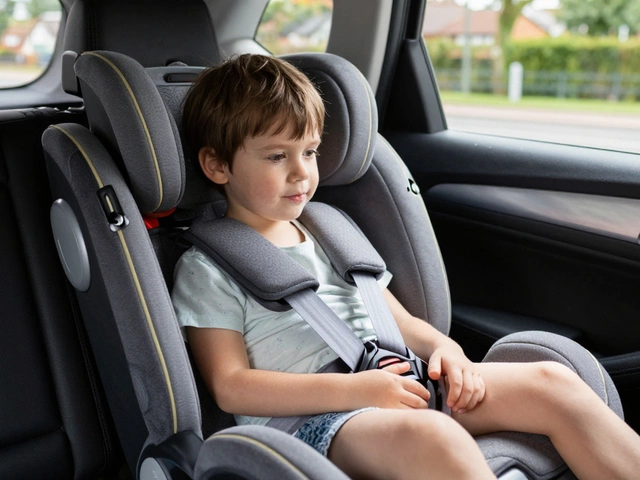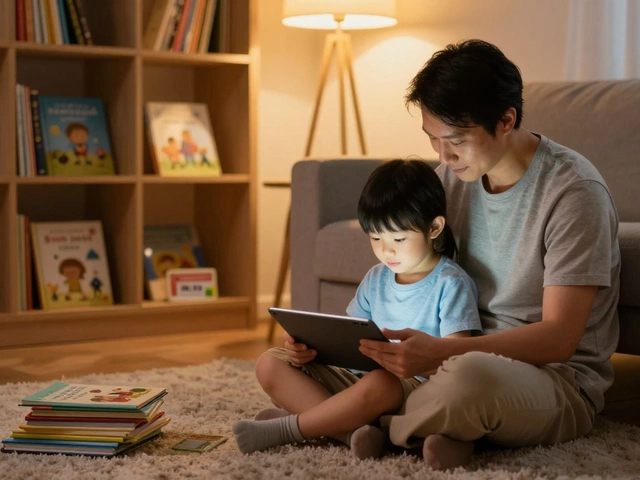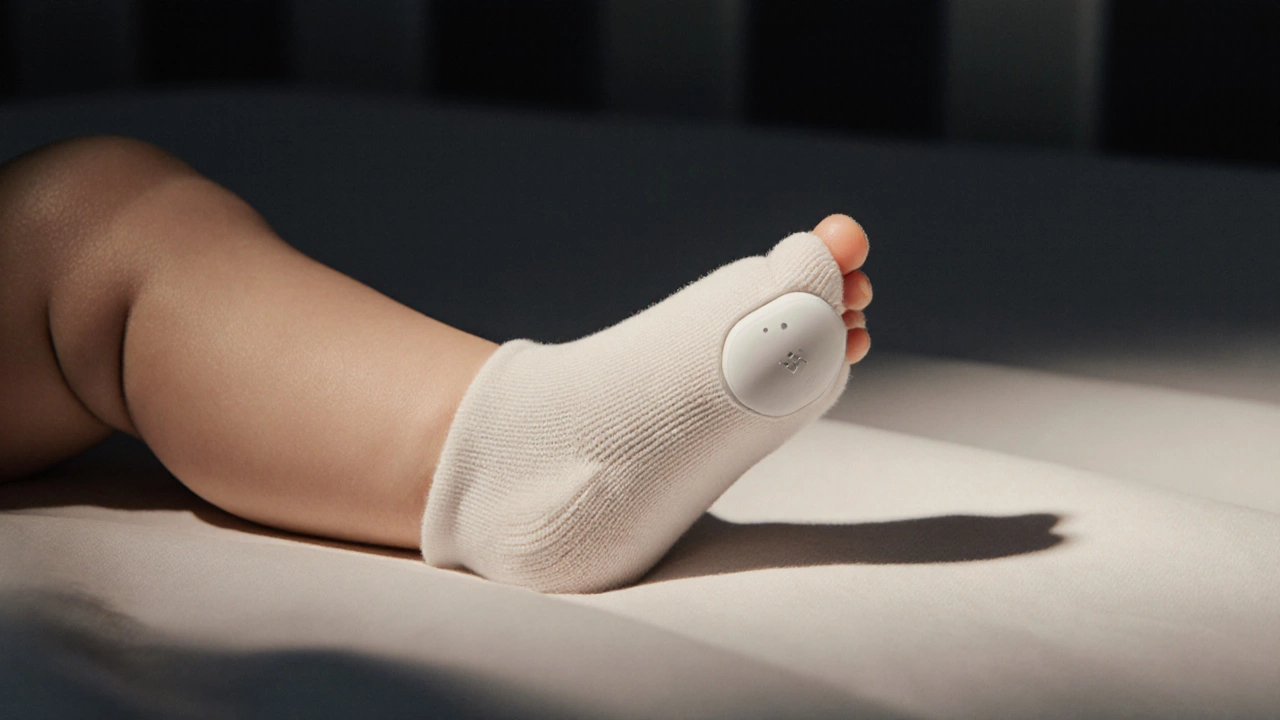
Baby Monitor Cost & Benefit Calculator
Your Baby's Risk Factors
Select all that apply to your situation
Cost Comparison
Sleep Impact
How many false alarms do you expect per night?
Your Results
Wearable Monitor
Total cost over 2 years
$0
Audio Monitor
Total cost over 2 years
$50
Sleep Impact
No sleep disruption
Safety Recommendation
Important Note: The American Academy of Pediatrics states there's no evidence these devices reduce SIDS risk in healthy infants. This calculator helps you compare costs and practical impacts, but does not replace medical advice. Always follow AAP safe sleep guidelines.
Every new parent wonders if they need another gadget to watch over their baby. Wearable baby monitors promise to track heart rate, breathing, oxygen levels, and sleep patterns-all while clipped to your baby’s diaper or sock. But do they actually help, or are they just expensive anxiety tools? The answer isn’t simple. Some parents swear by them. Others feel misled. And pediatricians? They’re mostly skeptical.
What wearable baby monitors actually do
These small devices, like the Owlet Smart Sock, Nanit Plus, or Snuza Hero, attach to your baby’s foot or diaper. They use sensors to measure:
- Heart rate (beats per minute)
- oxygen saturation (SpO2)
- movement or absence of motion
- sleep duration and cycles
The data syncs to your phone via Bluetooth or Wi-Fi. If something drops outside a preset range-like a heart rate below 100 or no movement for 20 seconds-you get an alert. Some even show real-time graphs of your baby’s sleep patterns.
But here’s the catch: these aren’t medical devices. The FDA doesn’t regulate them as such. That means they’re not held to the same accuracy standards as hospital-grade monitors. A 2021 study in Pediatrics found that wearable monitors gave false alarms in over 90% of cases when tested on healthy babies. That’s not a glitch-it’s normal for these devices.
Why parents buy them
Most parents don’t buy these because they think their baby is at risk. They buy them because they’re scared. After sleepless nights, after hearing stories of SIDS, after watching their tiny chest rise and fall while they sleep-it’s natural to want reassurance. You want to know, with absolute certainty, that your baby is okay.
For families with a history of SIDS, premature babies, or babies with known breathing issues, these devices can feel like a lifeline. One mother told me her son was born at 28 weeks. He had apnea episodes in the NICU. When they brought him home, the Owlet gave her peace of mind. She didn’t rely on it alone-but it helped her sleep.
Others use it for data. They notice their baby sleeps better after a bath, or wakes up more often after eating solids. The sleep logs help them spot patterns they’d never see otherwise.
The hidden downsides
But here’s what no ad tells you: these devices can make you more tired, not less.
False alarms wake you up every night. A sock that slips slightly? Alarm. A diaper that bunches? Alarm. A baby who’s just shifting position? Alarm. One dad said he got 14 alerts in one night. He ended up checking his baby six times. He didn’t sleep. He just got used to the noise.
Then there’s the cost. The Owlet Smart Sock 2 costs $250. The Nanit Plus camera with wearable adds another $300. You need to buy replacement socks every few months. That’s over $400 upfront, plus $30-$50 a year in supplies. For comparison, a basic audio monitor costs $50.
And the pressure? Some parents feel guilty if they don’t use one. They start thinking, “If I had just worn the monitor, maybe…” That guilt doesn’t help anyone.
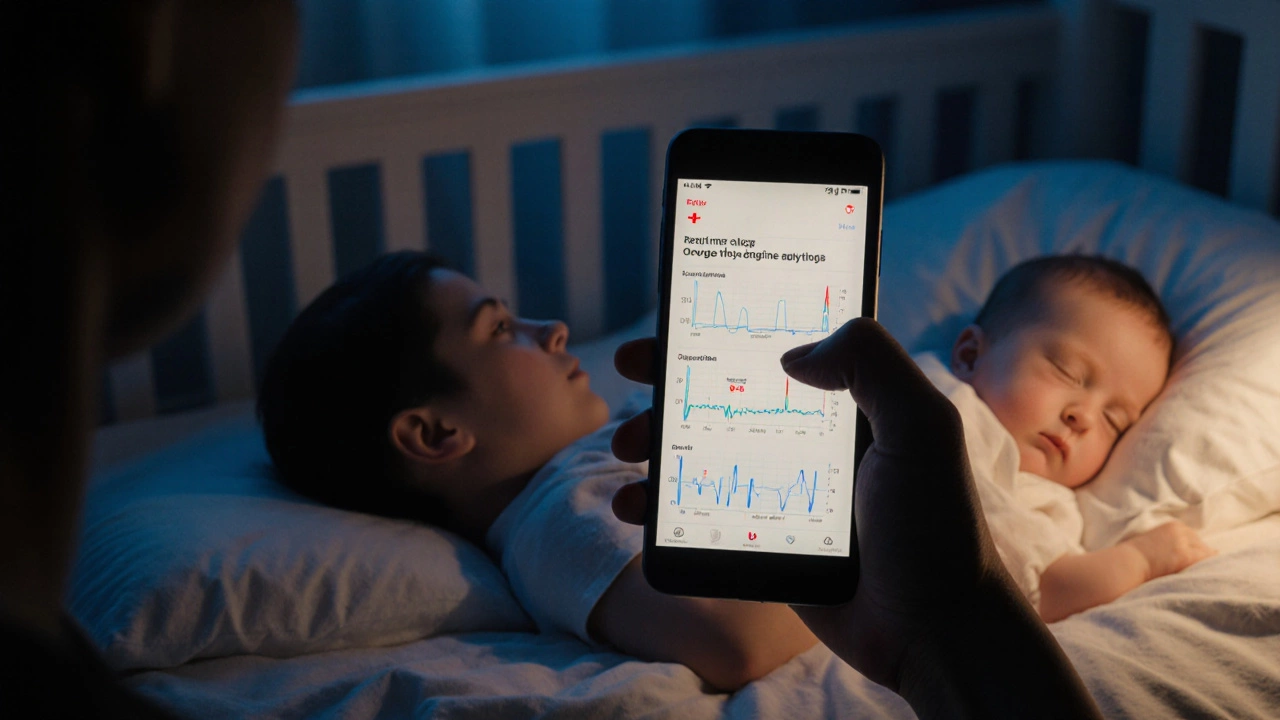
What the experts say
The American Academy of Pediatrics (AAP) doesn’t recommend wearable monitors for healthy infants. Their 2022 policy statement says: “There is no evidence that these devices reduce the risk of SIDS in healthy babies.”
Dr. Lisa Chien, a neonatologist at Children’s Hospital of Philadelphia, puts it plainly: “If your baby is healthy, full-term, and sleeping on their back in a bare crib, you don’t need a wearable monitor. What you need is a safe sleep environment-and a little trust.”
That doesn’t mean they’re useless. For babies with chronic conditions-like severe reflux, congenital heart defects, or recurring apnea-doctors sometimes recommend them as part of a care plan. But even then, they’re used alongside medical supervision, not as a replacement.
When a wearable monitor might actually help
There are real cases where these devices make sense:
- Your baby was born before 37 weeks and had breathing issues in the hospital
- Your pediatrician has flagged a history of apnea or low oxygen levels
- You’re managing a diagnosed condition like GERD or a cardiac arrhythmia
- You’re an anxious parent who can’t sleep without one-and you’ve accepted the false alarms as part of the trade-off
Even then, experts suggest pairing it with a simple audio monitor. That way, you hear your baby cry or fuss without needing to check a screen. You’re not replacing human instincts-you’re supporting them.
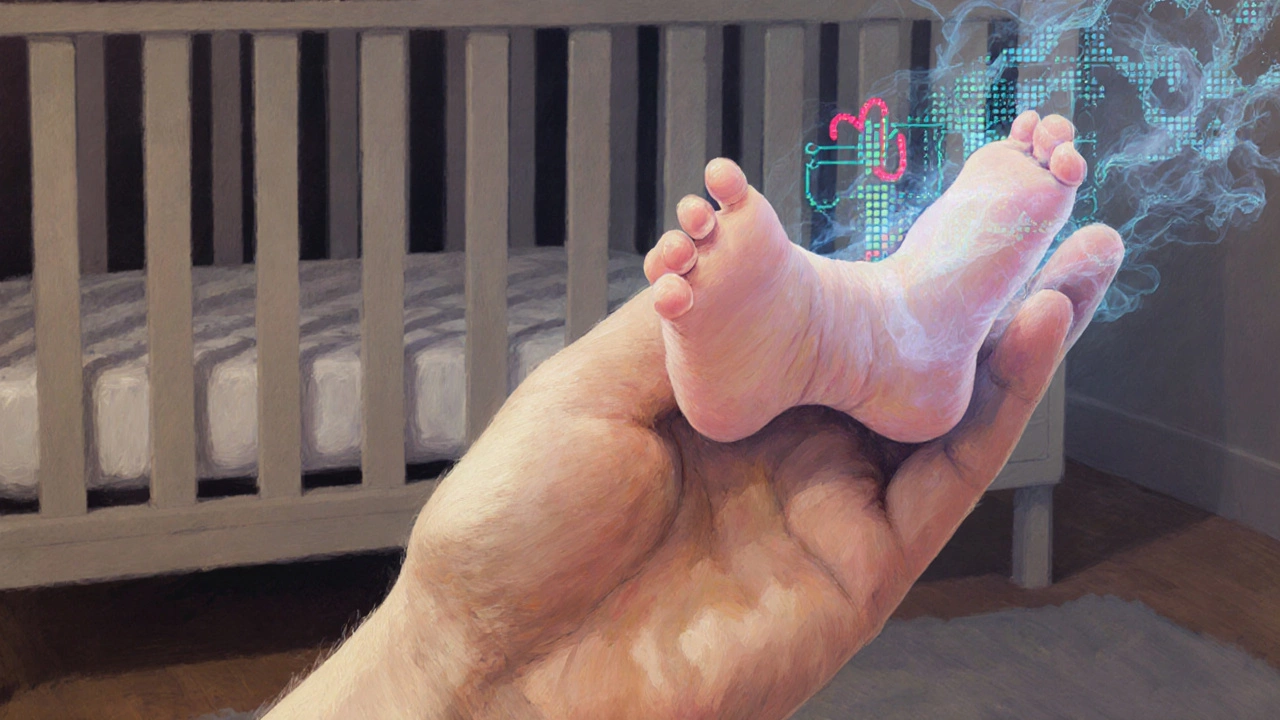
What to do instead
If you’re worried about SIDS or your baby’s breathing, here’s what actually works:
- Always place your baby on their back to sleep
- Use a firm, flat mattress with no pillows, blankets, or toys
- Keep the room cool-around 68-72°F
- Room-share without bed-sharing for at least the first 6 months
- Offer a pacifier at naptime and bedtime
- Don’t smoke near your baby, and avoid alcohol or sedatives while caring for them
These steps, backed by decades of research, reduce SIDS risk by up to 90%. No gadget beats that.
Final verdict: Are they worth it?
For most healthy babies? No. They add cost, stress, and false confidence. You’re not safer using one-you’re just more distracted.
For high-risk infants or parents with severe anxiety? Maybe. But only if you use it as a tool, not a crutch. And only if you’re prepared for the noise, the cost, and the guilt that comes with relying on a machine to tell you your baby is okay.
At the end of the day, babies don’t need smart socks. They need calm, consistent care. A warm hand on their back. A quiet room. A parent who trusts their instincts.
That’s the real monitor. And it doesn’t cost a cent.
Do wearable baby monitors prevent SIDS?
No. There is no scientific evidence that wearable baby monitors reduce the risk of SIDS in healthy infants. The American Academy of Pediatrics states that safe sleep practices-like placing babies on their back in a bare crib-are the only proven ways to lower SIDS risk. These devices may give parents peace of mind, but they are not medical devices and should not be relied on for life-saving alerts.
Are wearable baby monitors accurate?
They’re often not. A 2021 study in Pediatrics found that wearable monitors gave false alarms in over 90% of cases when tested on healthy babies. Factors like movement, sock placement, skin tone, and ambient temperature can cause inaccurate readings. These devices are designed for consumer use, not clinical accuracy. Don’t treat them like a hospital monitor.
How much do wearable baby monitors cost?
Most wearable monitors cost between $200 and $350 upfront. The Owlet Smart Sock 2 is $250, and the Nanit Plus with wearable starts at $300. You’ll also need to replace the sensor socks every 3-6 months, which cost $20-$30 per pair. Over two years, you could spend $400-$600. A basic audio monitor costs under $50 and works just as well for hearing your baby cry.
Can I use a wearable monitor with a regular baby monitor?
Yes, and many parents do. Using a wearable with a traditional audio or video monitor gives you the best of both: alerts for abnormal vitals plus the ability to hear your baby’s cries or fussing. This combo helps you respond faster without needing to constantly check your phone. Just make sure the wearable doesn’t interfere with the baby’s comfort or movement.
What’s the safest alternative to a wearable monitor?
The safest alternative is following AAP’s safe sleep guidelines: place your baby on their back in a crib with a firm mattress and no loose bedding. Room-share for the first 6-12 months. Use a simple audio monitor to hear your baby. These steps are proven to reduce SIDS risk by up to 90%. No gadget replaces consistent, calm parenting.





